Ball valves consist of a spherical ball with a bore that is rotated to open or close the valve. When aligned with the valve body, the bore allows fluid flow; when perpendicular, it seals the valve. The ball seals against seats in the valve body when closed to stop flow. Ball valves are quick opening, achieve full bore operation, and have low pressure drop. They can be automated or manually operated, with the handle indicating open/closed status. Ball valves come in 2-way, 3-way and multi-way configurations and are commonly used for shutoff, throttling and flow control of liquids, gases, and slurries in various industries. Key advantages are tight sealing, quick on-off operation, and full bore flow when open.
A ball valve works by utilising a perforated spherical ball that rotates within the valve body to control flow. When the valve is open, the ball's bore is aligned parallel with the flow path, allowing fluid to travel through the valve's inlet, through the ball's bore, and out the outlet. When closed, the ball is rotated 90 degrees by the handle or actuator so that the bore is perpendicular to the flow, sealing off the inlet and outlet ports. As the ball rotates, it presses against valve seats on either side to form a tight seal and stop flow. The open/close state is clearly indicated by the handle position. Ball valves achieve tight shutoff and can be opened/closed quickly with a 1/4 turn of the ball. Their uncomplicated operation, full bore flow, and low pressure drop make ball valves ideal for shutoff, throttling and control applications.
The common types include full port, reduced port, V-port, trunnion, and multiport ball valves, each designed for specific flow control conditions and applications.
Ball valves are ideal for applications requiring low-pressure drop and quick, on-off service. They are commonly used in applications involving water, natural gas, and in certain industrial processes.
Ball valves are typically made from materials like brass, stainless steel, PVC, and CPVC, offering various levels of strength, corrosion resistance, and suitability for different temperatures and pressures.
The correct size depends on the pipeline size and the flow requirements. It's essential to match the valve size with the flow rate, pressure, and the physical properties of the fluid.
While primarily designed for on/off control, certain types of ball valves, like V-port valves, can modulate flow. However, they may not offer the precise control of a globe or needle valve.
Maintenance involves regular cleaning, inspecting for leaks or damage, and lubricating the valve components. It's crucial to follow the manufacturer's guidelines for maintenance.
The term "full bore" refers to the fact that the valve has a larger internal diameter, providing minimal resistance to the flow of the fluid. In other words, the internal diameter of the valve is the same as the internal diameter of the pipeline it is installed in.
Yes, specific types of ball valves are designed to withstand high temperatures, but it's important to choose a valve made from materials suitable for the intended application's temperature range.
Ball valves offer faster shut-off, better durability for frequent operation, and generally have a smaller footprint. However, gate valves provide better throttling capabilities and are better for sustained shutoff.
The lifespan of a ball valve depends on its material, usage, and the conditions it's exposed to. Generally, ball valves are known for their durability and can last for many years with proper maintenance.
